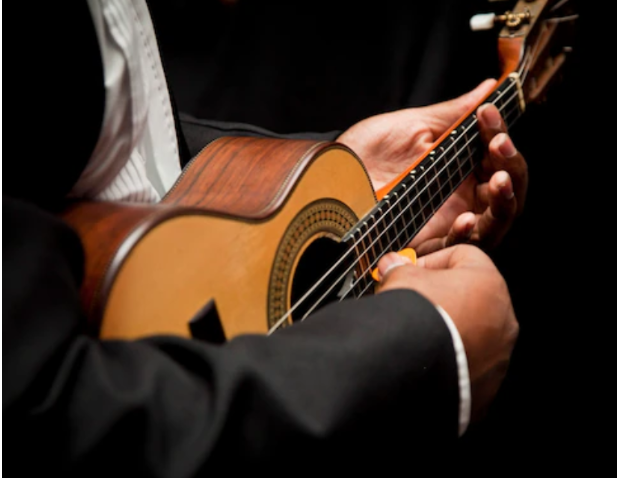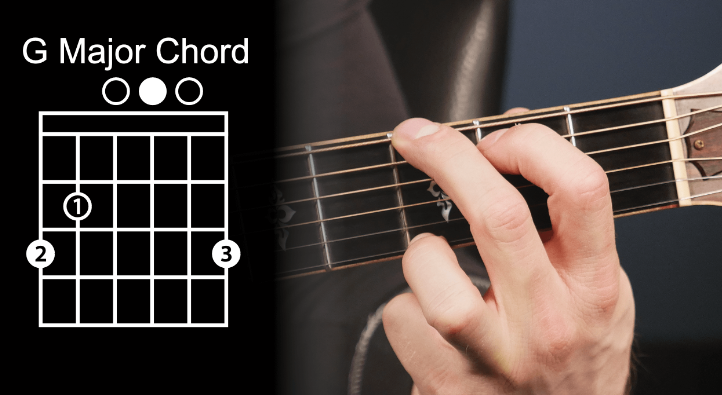Everything you need to know about the Amazing History of the Ukulele

I have to say, the ukulele is such a cool little instrument. My grandfather gave me his when I was a kid and never really got around to playing it.
The Ukulele
This instrument has experienced a resurgence in popularity.
Artists like Israel Kamakawiwo’ole and Jake Shimabukuro have brought the instrument back into the spotlight, introducing it to a new generation of music lovers.
With its light, cheerful sound and its portability, the ukulele has captivated audiences once again.
What makes the ukulele so special is its unique history. Originating from Portuguese immigrants in 19th century Hawaii, the ukulele, originally called the ‘machete’, quickly became a beloved instrument among the Hawaiians. They embraced it, molded its sound to fit their own style, and even gave it the name ‘ukulele’, meaning ‘jumping flea’. This term refers to the lively movement of a player’s fingers on the strings.
The ukulele’s journey to popularity in the United States began in the early 20th century. King David Kalakaua, a patron of the arts and a passionate lover of the ukulele, helped elevate it to a symbol of Hawaiian culture. At the Panama-Pacific International Exposition of 1915 in San Francisco, the ukulele’s enchanting sound filled the air, captivating all who heard it. This marked a turning point in the instrument’s rise to fame.
During the 1920s and 1930s, the ukulele became the sound of the era. Its affordability, portability, and cheerful tone made it a beloved instrument during this time. However, after World War II, its popularity waned.
Fortunately, in the 21st century, the ukulele has made a remarkable comeback. Artists like Israel Kamakawiwo’ole and Jake Shimabukuro have reintroduced the instrument to a wider audience, showcasing its versatility and charm. It seems that the ukulele’s journey is far from over, as it continues to capture the hearts of musicians and listeners alike.
Today, the ukulele is a global phenomenon. Additionally, it’s a symbol of simplicity, joy, and an instrument that ties together generations and cultures. Furthermore, from a humble Portuguese import to a Hawaiian icon and a worldwide sensation, the ukulele’s journey is a testament to the unpredictable, thrilling ride of musical evolution.
In a world where things seem to change at the drop of a hat, the ukulele stands as a reminder that sometimes, the most unexpected things endure and thrive. Additionally, it’s not just an instrument; rather, it’s a story of resilience, adaptation, and the unifying power of music. Furthermore, it is an accidental discovery that turned into an unstoppable cultural force.
The Parts of the Ukulele:

The Headstock
The headstock of a ukulele, often an overlooked part, carries immense importance. It’s not just a decorative crown, but rather a key component that holds the tuning pegs in place. These pegs are the knobs you turn to achieve the right tension on your strings, resulting in the perfect pitch.
Some headstocks are slotted, giving them a classic appeal, while others are solid, exuding a more contemporary vibe. This is the first stop on our ukulele exploration journey, setting the tone for the melodious adventure that lies ahead. Next, we descend to the neck of our trusted ukulele, a territory brimming with tales waiting to be told. Let’s press on, shall we?
The Neck
The neck of the ukulele is not just a bridge between the headstock and the body; it’s a domain where melodies are born and nurtured. Furthermore, the neck wears the fretboard, often made of hardwood, like a badge of honor. In this space, the steel or nylon strings gracefully kiss the frets, creating the chords that make your ukulele sing.
Additionally, as you glide your fingers along the fretboard, you unlock new melodies, with each fret representing a different note.
The neck is often shaped to fit comfortably in your hands, allowing for ease of movement and flexibility. It’s not just a connection, it’s a vital part of the ukulele that brings music to life. After this, we’ll journey towards the heart of our ukulele, the body. Ready to dive deeper?
The headstock, found at the top of the ukulele, has an essential role in tune stability. It houses the tuners and is designed in such a way that it helps maintain consistent string tension.
The Tuners
Ukulele tuners, or tuning pegs as they are often called, are small but mighty parts of the instrument. Mounted securely on the headstock, these mechanical wonders bear the responsibility of adjusting the pitch of each string. By turning the tuners, you change the tension of the strings, either tightening them to raise the pitch or loosening them to lower it.
Their precision and stability are critical in ensuring your ukulele stays in tune, allowing for the consistent, melodious sound we all love.
Some ukuleles feature friction tuners, which operate on the simple principle of friction and require a firm hand. On the other hand, others are equipped with geared tuners that provide a more gradual, controlled tuning process. In the end, these tuners are a testament to the fine balance of mechanics and melody.
They are a crucial part of the ukulele that underlines the symphony of its parts. Additionally, standing tall on the headstock, these tuners are the guardians of harmony, ensuring that each strum rings true.
Now, having explored the tuners, we’re ready to dive deeper into the anatomy of our beloved ukulele, bringing us to the bridge, a crucial component that connects the strings to the body of the ukulele. Shall we proceed?
Tuners or tuning pegs, attached to the headstock, are critical for tuning the strings of the ukulele. By turning these knobs, you can tighten or loosen the strings to achieve the desired pitch.
The Nut
The nut is a small yet vital part of the ukulele, subtly nestled between the headstock and the neck. It’s a narrow strip, often crafted from bone, plastic, or sometimes brass. Its role? To guide the strings neatly onto the fretboard. The nut has grooves for each string, keeping them properly spaced and elevated above the frets.
This elevation is crucial, as it affects both the action (the distance between the strings and the fretboard) and the intonation of your ukulele.
When you play an open string note, the nut is the point from which the string vibrates. Its material and positioning can significantly impact the sound produced, truly making the nut a small but mighty member of the ukulele family.
After understanding the role of the nut, we’re ready to explore the grandeur of the body of the ukulele, where the magic truly amplifies. Onwards to resonance and rhythm, shall we?
Just below the headstock, you’ll find the nut. This small, yet crucial element elevates the strings off the neck of the ukulele, helping to space them correctly and contributing to the instrument’s overall tone.
The Bridge
Holding the fort at the bottom of the body is the bridge – a vital part of the ukulele that quite literally bridges the gap between the strings and the body. It’s here that the strings are anchored, often with knots or bridge pins. When you strum or pick the strings, their vibrations get transmitted to the top of the ukulele through the bridge, contributing to the instrument’s overall sound.
The bridge’s position and quality directly impact the ukulele’s intonation and playability.
The saddle, usually made from bone or synthetic materials, sits atop the bridge, providing a firm rest for the strings and further aiding in sound transmission. Now that we’ve charted the bridge, it’s time for us to make our final stop – the strings, the heart of our ukulele’s music. Shall we strum along?
The Body
Ah, the body of the ukulele. Firstly, this is where the real magic happens. Furthermore, it is considered the heart of the instrument as all parts converge to produce the sweet, soulful sound we adore. The body of the ukulele is primarily composed of the soundboard, the back, and the sides. Moreover, depending on the material used, which can range from mahogany to koa or even spruce, each body sings a unique song. Therefore, it offers a different tone and resonance, creating a varied musical experience.
Within this hollow chamber, the vibrations from the strings reverberate and amplify, creating the ukulele’s distinctive sound. The soundhole, located in the center of the soundboard, allows this sound to project outward, allowing us to enjoy the full melody.
The body of the ukulele is not just an assembly of wood and glue; it’s the resonating chamber of rhythm, a testament to the harmony of construction and sound.
Now that we’ve explored the body, let’s move on to an often underestimated but crucial part of the ukulele – the bridge. Shall we?
The neck of the ukulele is the long, thin portion that connects the headstock to the body. It’s where you’ll place your fingers to create chords and notes.
The Fretboard (or Fingerboard)
Firstly, the fretboard, or fingerboard, is the playground for your fingers. Additionally, it is where melodies are born and chords are formed. Mounted onto the neck of the ukulele, it’s usually crafted from hardwoods like rosewood or mahogany for durability and a rich sound. Moreover, the fretboard is marked with metal strips called frets, spaced at specific intervals.
As you press the strings against these frets and strum, different pitches are produced, giving you a spectrum of notes to play with. The fretboard’s design and quality greatly influence the playability and tonal quality of the ukulele. A well-crafted fretboard ensures comfortable play and effortless movement of fingers, enhancing your ukulele playing experience.
Now that we’ve strummed through the nuances of the fretboard, it’s time to focus on the last but certainly not least part of our ukulele—the strings. Ready to strike a chord?
The fretboard is located on the front side of the neck, and it’s where all the magic happens. It’s marked with frets, and pressing down the strings against it enables you to produce different notes.
The Strings
The strings are the lifeblood of the ukulele, the primary source of its voice and character. They run the length of the instrument, from the tuners at the top of the headstock to the bridge at the bottom of the body.
Depending on the material they’re made from – typically nylon, gut, or a type of synthetic gut like fluorocarbon – and how they’re wound, they can produce a variety of tones, from bright and sharp to mellow and warm.
The ukulele typically has four strings, tuned to the notes G, C, E, and A. The strings are numbered from the floor upwards, so the bottom string (closest to the floor when you’re holding your ukulele) is string 1, and the top string is string 4.
As you strum these strings, their vibrations travel through the bridge to the body of the ukulele, resonating within the hollow chamber to produce the full, rich sound that makes the ukulele so beloved.
Now that we’ve brought the strings into the spotlight, we have completed our journey through the anatomy of the ukulele. Each part, from the humble tuners to the vibrant strings, plays its role in the symphony of sound that is the ukulele. Shall we tune in and play?
The Sound Hole
The sound hole, often a circular opening located in the center of the soundboard, is like the voice of the ukulele, allowing the instrument to project its sound. As you strum the strings, their vibrations course through the ukulele and reverberate within the body, generating the ukulele’s distinctive sound.
The sound hole provides an exit point for these sound waves, allowing them to escape and reach our ears. Its size and placement, while generally standard, can sometimes vary and subtly influence the tonal quality of the ukulele.
Some ukuleles even feature creatively shaped or positioned sound holes for a unique aesthetic touch. But at its core, the sound hole is a pivotal part of the ukulele’s anatomy, a small aperture that releases a world of melodies. Now that we’ve delved into the function of the sound hole, our journey through the parts of the ukulele is complete. Let’s strike a chord and let the music play!
Centrally located in the body of the ukulele, the sound hole allows the sound waves to escape from the body. When the strings are strummed, the sound hole helps project the sound outwards.
The Saddle
The saddle is an often overlooked but vital part of a ukulele’s anatomy. It is a small, typically rectangular piece that resides on the bridge of the instrument. One of its key responsibilities is to support the strings, ensuring they are at the correct height and perfectly aligned for accurate playing.
The saddle also plays a pivotal role in the transmission of string vibrations to the body of the ukulele, influencing the overall sound quality. Materials used for the saddle can vary. Bone and synthetic materials are the most common, each offering distinct tonal characteristics.
A bone saddle is known for its ability to convey a rich, warm tone, while synthetic materials like plastic or Tusq can deliver increased brightness and sharpness to the ukulele’s sound. The saddle’s height and positioning are also crucial, affecting the instrument’s action and intonation.
A well-set saddle ensures comfortable playability and precise note production. Truly, the saddle might be a small component in the grand scheme of the ukulele’s design, but its contribution to the instrument’s performance is significant.
Finally, the saddle, typically situated on the bridge, is where the strings rest. It not only ensures the correct positioning and spacing of the strings but also affects the tone and pitch of the ukulele.
If things aren’t as clear as day about the parts, well now we are clear. Follow us for more info on all things music.





